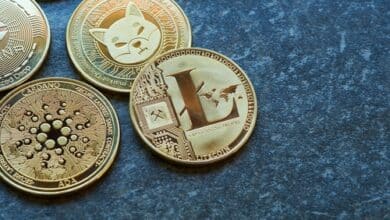How Might Web3 Users Harness the Power of Decentralized Social Networks?

Understanding unfamiliar technological frameworks is crucial in today’s technology-driven world. Decentralized social media and Web3 are two of the most talked-about new concepts. These concepts offer a worldwide stage for people to express themselves and alter how we see online interaction. The increasing rapidity of digital change makes exploring this topic essential, as does the widespread use of blockchain-based applications. Our Tokenhell manual is meant to shed light on the revolutionary potential of Web3’s integration with decentralized social media, revealing its empowering potential for users.
Context
Understanding any event’s current status and future trajectory requires first establishing its historical context and underlying underpinnings. This examination requires looking into the history of social media’s development, the birth of Web3, and the advent of decentralized technology.
Since its start, the social media ecosystem has changed dramatically. When it was launched, the World Wide Web (Web1) was a primary informational resource for readers. Social media evolved into a read-write platform where users could interact, share, and cooperate with the advent of Web2. Web2 did, however, lead to data monopolies and privacy problems due to its concentration of power.
The next step in this progression is represented by Web3, founded on decentralization, user-centricity, and transparency. In contrast to its forerunner, Web3 follows the tenets of Decentralised Social Media by giving individuals more agency over their data once again. Web3 is built around blockchain technology that records all transactions and interactions in a distributed and unchangeable ledger.
The last ten years have seen a meteoric rise in the popularity of decentralized technologies like Blockchain and Cryptocurrencies. Blockchain is the perfect catalyst for creating a user-centric internet since it is transparent, tamper-proof, and decentralized. At the same time, cryptocurrencies provide a decentralized method of trading currency that is unregulated by any governing body or central bank.
Gaining Insight into the Realm of Decentralized Social Networking
The advent of decentralized social media ushers in a new age of online connection that radically alters the current environment. In contrast to centralized platforms, decentralized networks shift the balance of power by dispersing it across the network’s nodes.
The critical differences between Web2 social media and its decentralized Web3 cousins are data governance and ownership. Web 2.0 services like Facebook and Twitter continue to exercise control over their users’ communications, algorithmic decisions, and data. They can filter content or even remove people entirely, and they decide what you see.
In contrast, decentralized social media systems give people back control over their data. The data is distributed over a public, immutable, and tamper-proof network of nodes. The information of users may be accessed, managed, and even monetized. The platform is often governed by decentralized consensus techniques that give users a voice in decision-making and rebalance power.
In recent years, a profusion of decentralized social media networks has appeared. Mastodon’s popularity has increased as people seek alternatives to Facebook and Twitter. However, Steemit has changed social media by offering Bitcoin payouts for original content development and curation. The Web3 environment also includes other platforms that provide users agency, such as Minds, Sapien, and DTube.
The shift of Power: Web2 versus Web3
Social media has seen a significant upheaval with the advent of Web3 and decentralized platforms. These cutting-edge tools have reshaped how power is shared in cyberspace, necessitating a close look.
Most Web2 social media sites have a centralized management structure. As data gatekeepers, they control what users see and can do on their platforms and have much say in what is published. These sites tailor their material to each user using complex algorithms that analyze massive amounts of user data. Concerns about privacy, data security, and freedom of expression have been expressed in response to this consolidation of power within a few organizations.
In stark contrast, Web3 ushers in a brand-new age of decentralized power. Built on blockchain technology, decentralized social media networks directly provide power over content and moderation to users. These systems promote a more democratic approach to content curation, restraint, and policy formulation by giving people control over their data.
This change in power dynamics inside Web3 platforms is primarily enabled by decentralization and tokenomics concepts. By spreading user data over a network rather than keeping it all in one place, decentralization improves data accessibility and security. However, tokenomics empowers users to earn value from participating in the platform’s ecosystem and have a voice in determining its direction. Users can actively shape their future by participating in the platform’s progress and making tokens for their efforts.
Unleashing the Potential of Decentralized Social Media for Empowerment
Tokenization, decentralized governance, censorship resistance, and the ability to retain control over one’s data are just a few of how decentralized social media platforms empower Web3 users. Decentralized social media, in contrast to centralized platforms, puts the data back in the hands of its users, providing more privacy and security thanks to its dispersed storage mechanism. Tokenization’s incorporation into these networks encourages users to contribute and gives them economic independence by compensating them for their digital labor. Furthermore, users can actively influence platform policies and norms via decentralized governance systems, guaranteeing a democratic decision-making process that amplifies varied perspectives and promotes agreement. Decentralized social media platforms place a premium on censorship resistance by using the immutability and transparency of blockchain technology, thereby protecting users’ right to free expression and making it far more difficult for any institution to stifle user-generated material.
Examination of Real-Life Scenarios
Steemit is exemplary of a decentralized social media network that successfully rewards participation and content production from its users. Users on Steemit are given a voice and a financial voice via the platform’s cryptocurrency incentive structure, which challenges the supremacy of businesses. The revolutionary approach to content monetization is made possible by the platform’s exclusive Proof-of-Brain algorithm, which evaluates content quality based on user feedback.
Mastodon, on the other hand, stands apart by protecting user privacy and opposing censorship. Mastodon encourages a community that values free expression by letting people set up their servers with unique moderation procedures. Its distributed nature prevents any one entity from stifling free expression, making it an ideal platform for honest debate.
However, difficulties arise with decentralized social networking sites. Companies need assistance achieving widespread acceptance to compete with established social media heavyweights. Continuous improvements to the user experience, strong security measures, and the building of community trust are required to attract and maintain users.
Another difficulty is managing potentially offensive material. The platforms must handle the accidental inclusion of harmful or hazardous content, even as they prioritize censorship resistance. Maintaining a balance between free expression and public safety calls for constant work and thoughtful deliberation.
The perseverance and creativity of decentralized social media platforms in the face of these challenges indicate their ability to liberate Web3 users. These case studies and the accomplishments and lessons learned from them may help advance the decentralized social media environment.
Emerging Horizons: Decentralized Social Media and the Web3 Paradigm
The coming together of Web3 with decentralized social media has the potential to transform the online world completely. Numerous trends and revolutionary changes are on the horizon as this technology develops further, and they can radically alter the nature of our digital encounters and communications.
AI-powered personalization and decentralization: As AI advances, it will play an increasingly important role in the future of social media without a central authority. Combining personalized AI with blockchain technology may provide private, individualized experiences. During the Web2 era, striking this fine-tuned equilibrium between user privacy and customized information proved difficult.
There are new ways for people to make money off of their social media activity on decentralized platforms, and this trend is expected to continue. Tokenization allows users to profit from their contributions to the network, creating new revenue streams. This continuous movement can reframe the idea of digital labor by elevating the significance of individual users’ participation in the online space.
More democratic and accessible forms of government are made possible by incorporating blockchain technology into social media platforms, an essential aspect of digital citizenship. This prepares the way for developing digital citizenship, in which people’s online rights and duties are acknowledged and respected. A new governance paradigm emerges as individuals take a more active role in selecting choices.
Expanding the Web3 ecosystem makes interoperability and collaborative cross-platform experiences more critical. Users should have a consistent experience navigating across services. This approach may encourage the growth of a networked digital ecosystem, giving consumers more options for how to spend their time online.
Increased Security Measures As users become more concerned about their digital footprints, decentralized social media networks must include additional security precautions. Zero-knowledge proofs, a privacy-protecting technology that allows users to authenticate transactions without disclosing personal data, may rise in popularity. Privacy protections must be beefed up as people want more management over their digital traces.
Conclusion
There are several liberating advantages of using decentralized social media. Users are changed from bystanders into active participants in the digital sphere when given agency over their data, offered financial incentives through tokenization, and given a voice in platform governance. They can shape their digital environments, influencing online services’ growth while benefiting from them. Technology developments further strengthen this sense of agency. A user-focused and privacy-conscious digital environment may be possible with the help of decentralized social media, personalized AI, and strong privacy protections.
Tokenhell produces content exposure for over 5,000 crypto companies and you can be one of them too! Contact at info@tokenhell.com if you have any questions. Cryptocurrencies are highly volatile, conduct your own research before making any investment decisions. Some of the posts on this website are guest posts or paid posts that are not written by Tokenhell authors (namely Crypto Cable , Sponsored Articles and Press Release content) and the views expressed in these types of posts do not reflect the views of this website. Tokenhell is not responsible for the content, accuracy, quality, advertising, products or any other content or banners (ad space) posted on the site. Read full terms and conditions / disclaimer.





